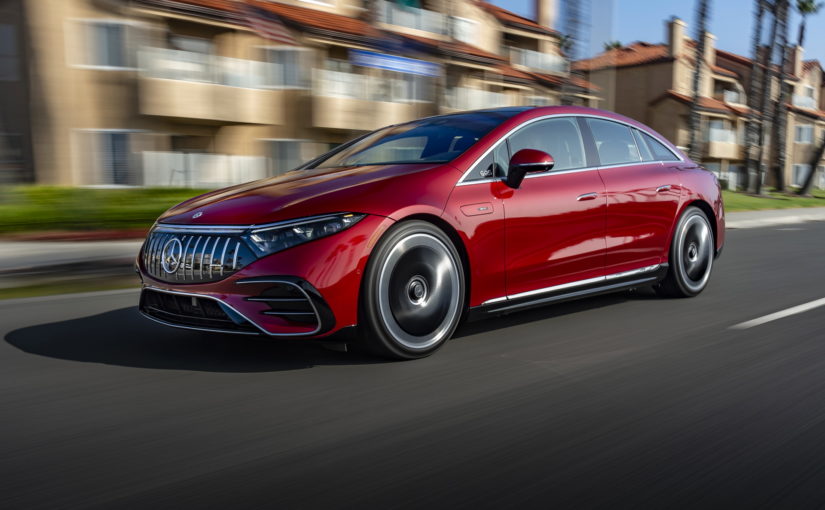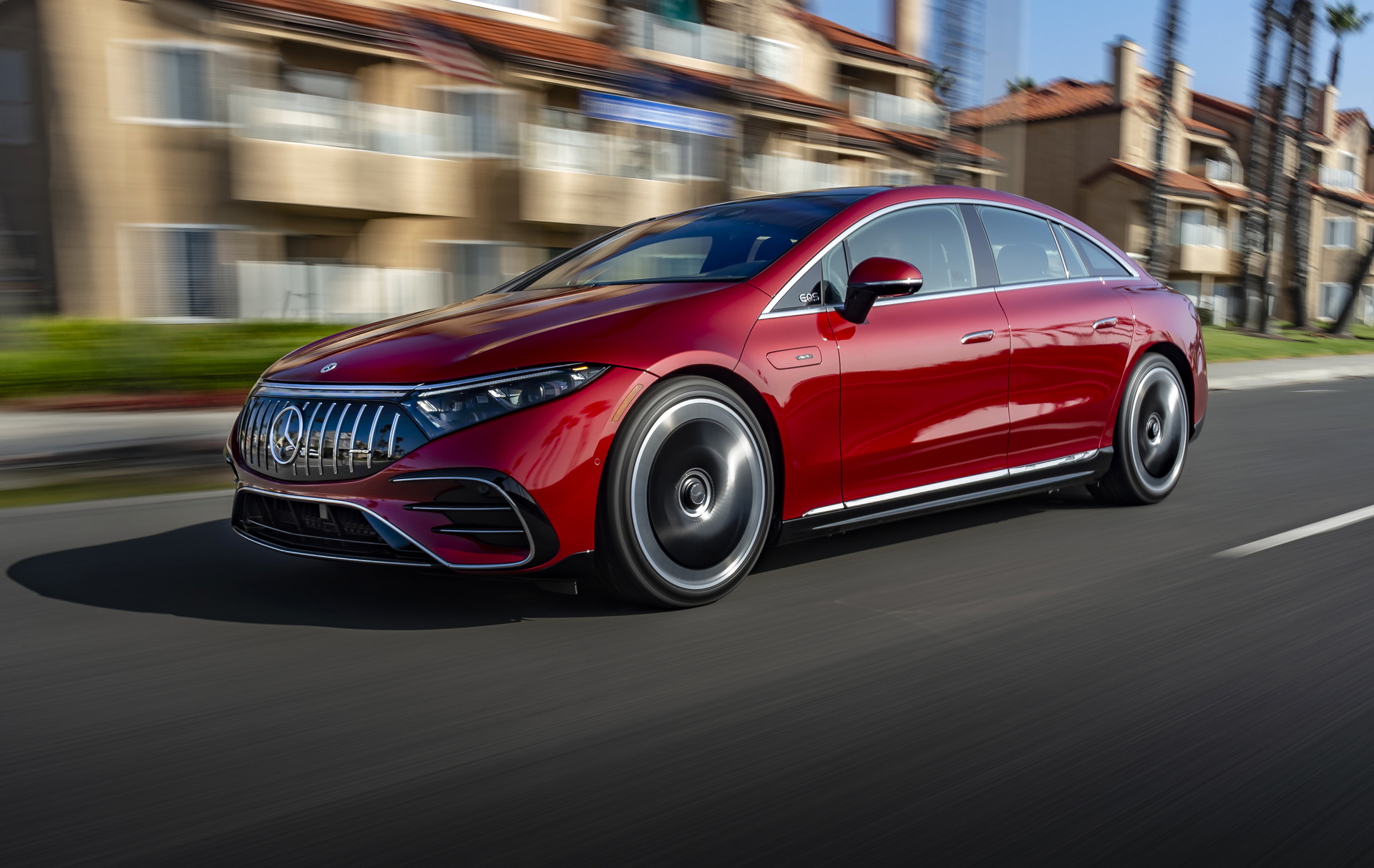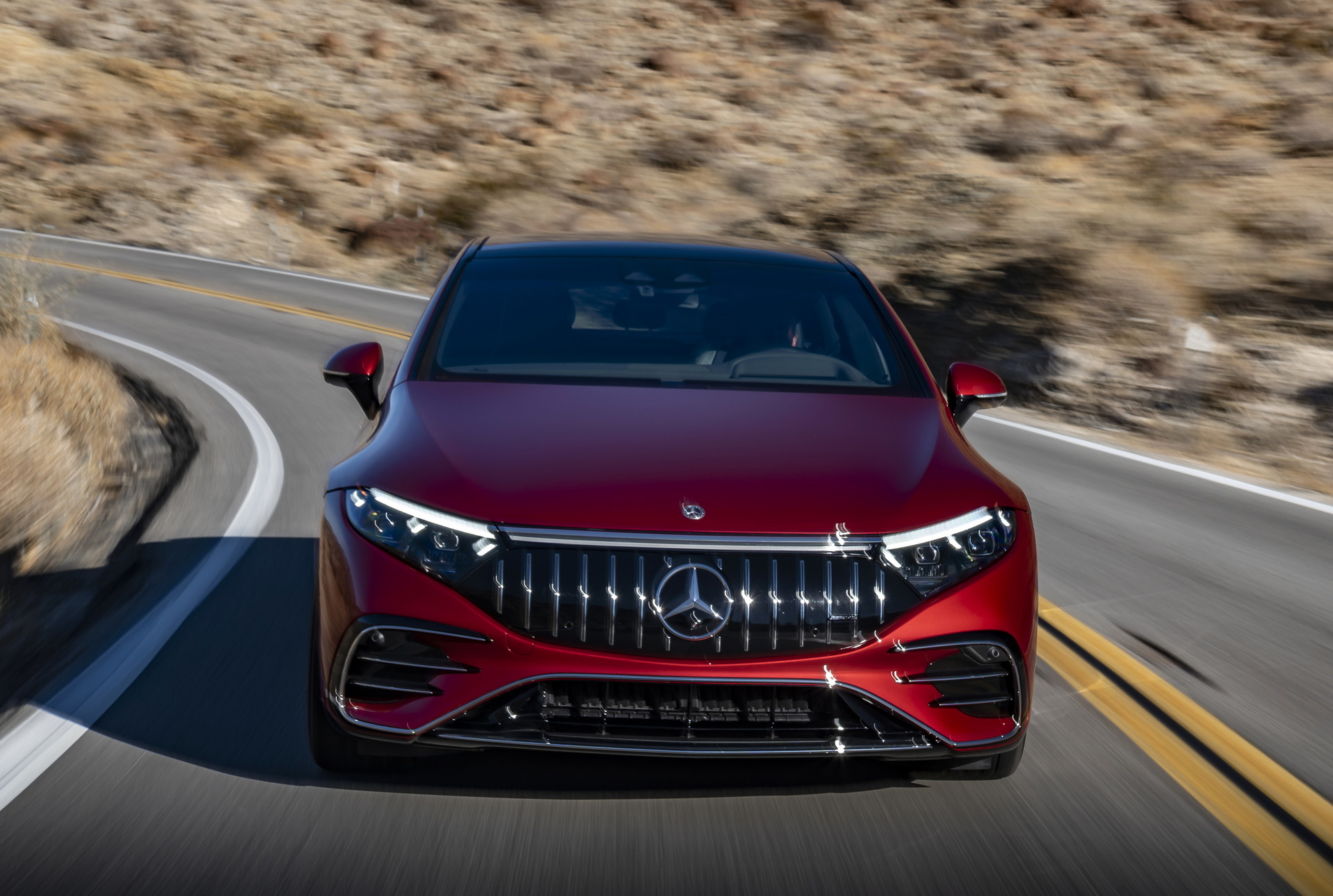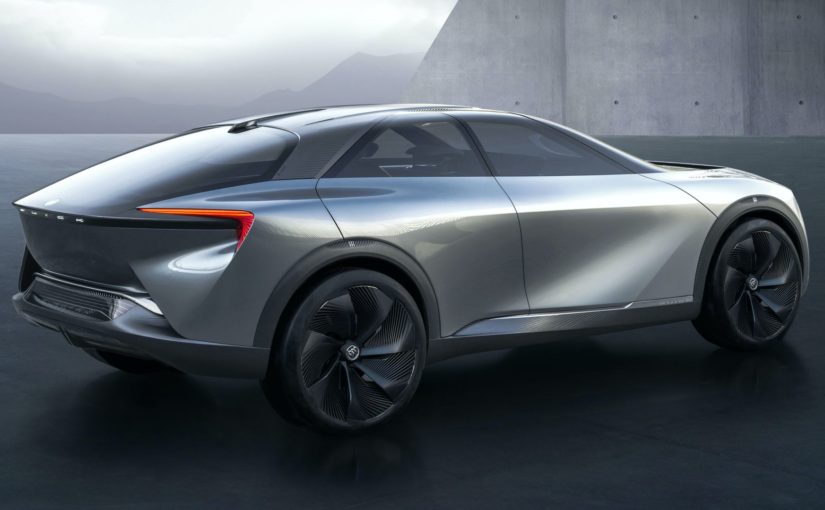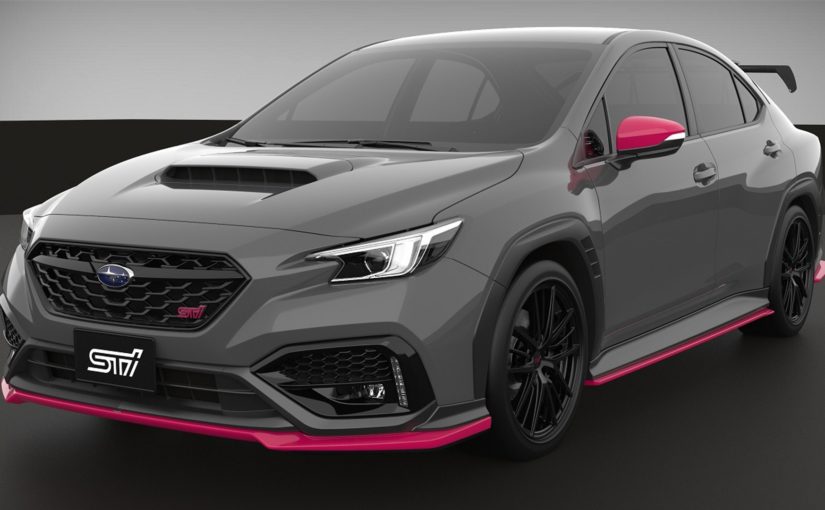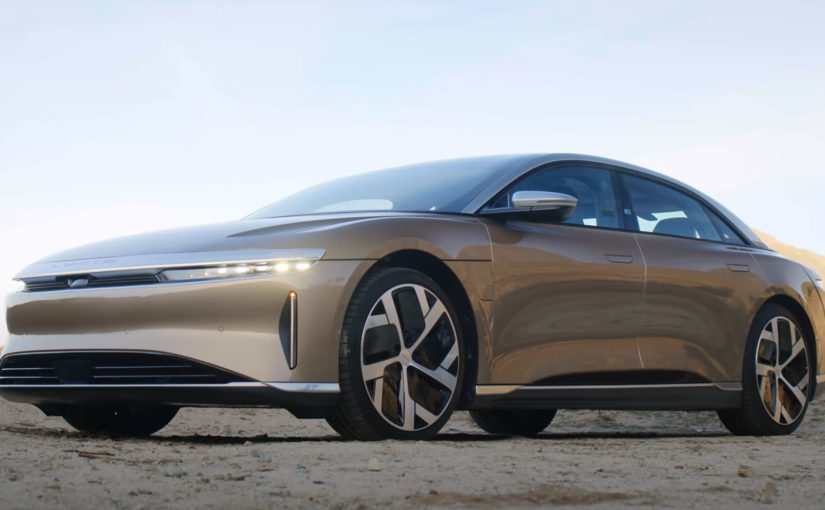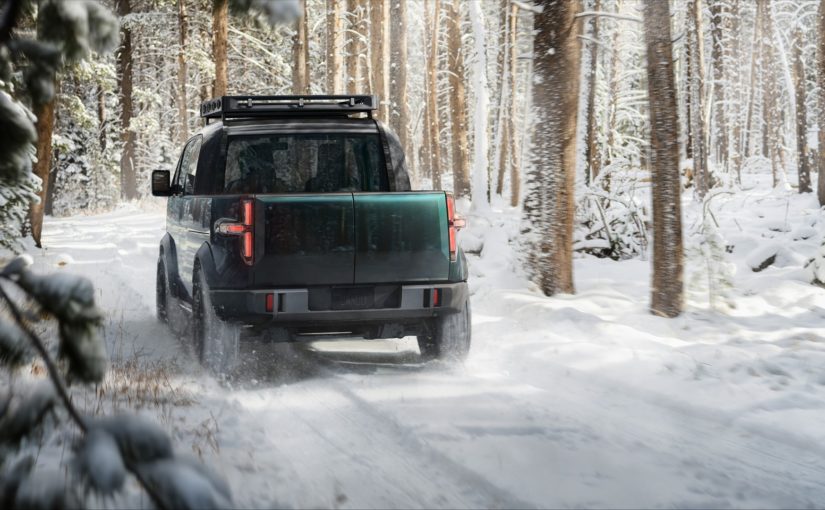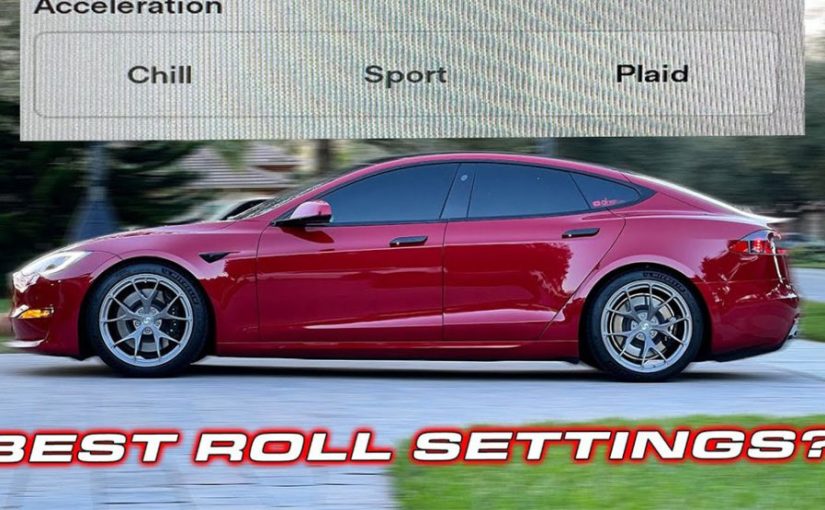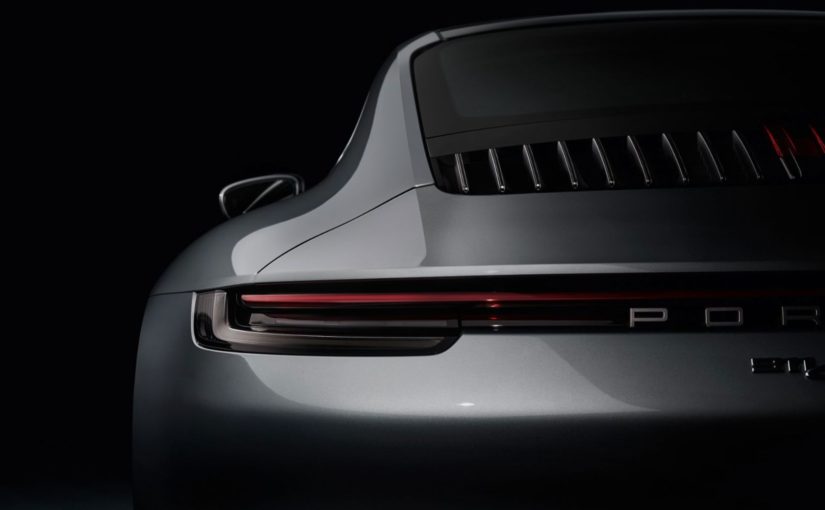Two months ago, Mercedes unveiled the AMG EQS 53 at the Munich Motor Show as the first electric vehicle to wear the AMG badge. Now, the German automaker has released pricing for it, and it’s about what you’d expect for a range-topping high-performance EV sedan.
The EQS 53 will start at £154,995 (equal to around $208,000 at current exchange rates) in the UK, or 55% more than the base EQS 450’s starting price of £99,995. It’s also more expensive than the current flagship Porsche Taycan Turbo S that’s rated for 761PS / 751HP and kicks off from £139,280 (about $186,900).
For that money, you get a dual-motor AWD drivetrain producing 649 hp (658 PS / 484 kW) and 701 lb-ft (950 Nm) of instant electric torque. Upgrade to the AMG Performance Package with the Night Edition that pushes the starting price to £163,900 (around $220,000) though, and that same drivetrain produces 751 hp (761 PS / 560 kW) and 752 lb-ft (1020 Nm) of torque.
Read More: Electrifying 751-HP Mercedes-AMG EQS 53 Is Benz’s New Performance Flagship Limo
The former enables a 3.8-second sprint to 62 mph (100 km/h) with a top speed of 137 mph (220 km/h), while the latter allows for 3.4 seconds to 62 mph with a top speed of 155 mph (249 km/h). The range is the same for both, with a WLTP-estimated 358 miles (576 km) on tap from the car’s 107.8 kWh battery.
Standard features on all variants include the 56-inch Hyperscreen, an AR heads-up display, Nappa leather upholstery, a Burmester® surround sound system, a Parking package with Active Parking Assist, and 360° camera, Driving Assistance Package Plus, AMG sound programs, AMG-specific bodywork, and an AMG steering wheel.
Included with the Night Edition are 21-inch AMG alloy wheels, a flat-bottomed sport steering wheel, and sport pedals. Upgrading to the £8,995 AMG Performance Package (which is only available with the Night Edition) gets you carbon-ceramic brakes, AMG Dynamic Plus boost for Race Start, the AMG Sound Experience, the AMG Driver’s Package with increased top speed, AMG TRACK PACE, and AMG carbon-fiber interior trim.
Related: 2023 Mercedes-AMG EQE 53 Spied Almost Undisguised With Different Wheel Designs
Finally, serving as a counterpart to the bold Night Edition is the more subtle Touring specification, which comes with 22-inch AMG multi-spoke alloy wheels and elegant ambient lighting in the cabin. On top of that, you can opt for the £2,995 Rear Luxury Lounge package (only available with the Touring), which outfits the multi-contour rear seats with black Exclusive Nappa leather upholstery, power reclining, luxury headrests, neck and shoulder heating, comfort armrests, separate climate controls, an MBUX tablet, wireless charging, and additional USB ports.
The 2022 Mercedes-AMG EQS 53 4MATIC+ is currently on sale now, with the first UK deliveries expected to arrive in April 2022.
For GREAT deals on a new or used INFINITI check out INFINITI of Tucson TODAY!